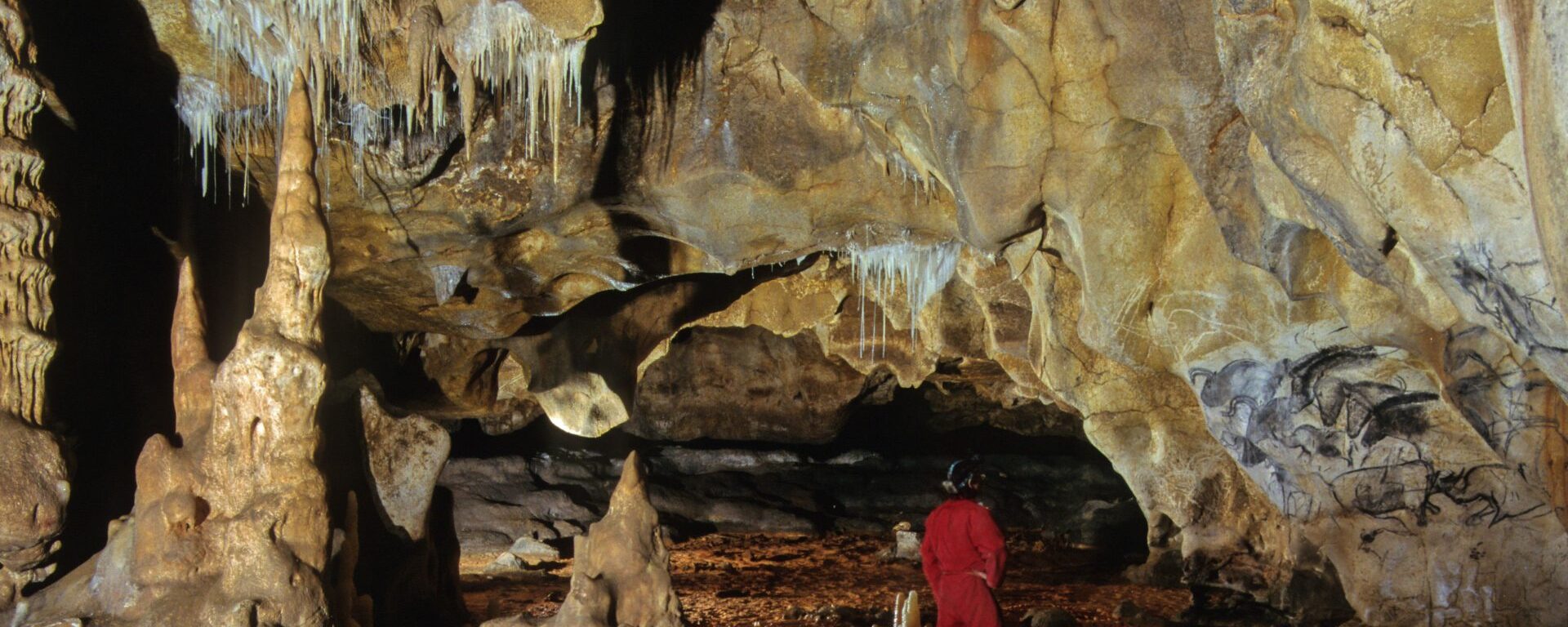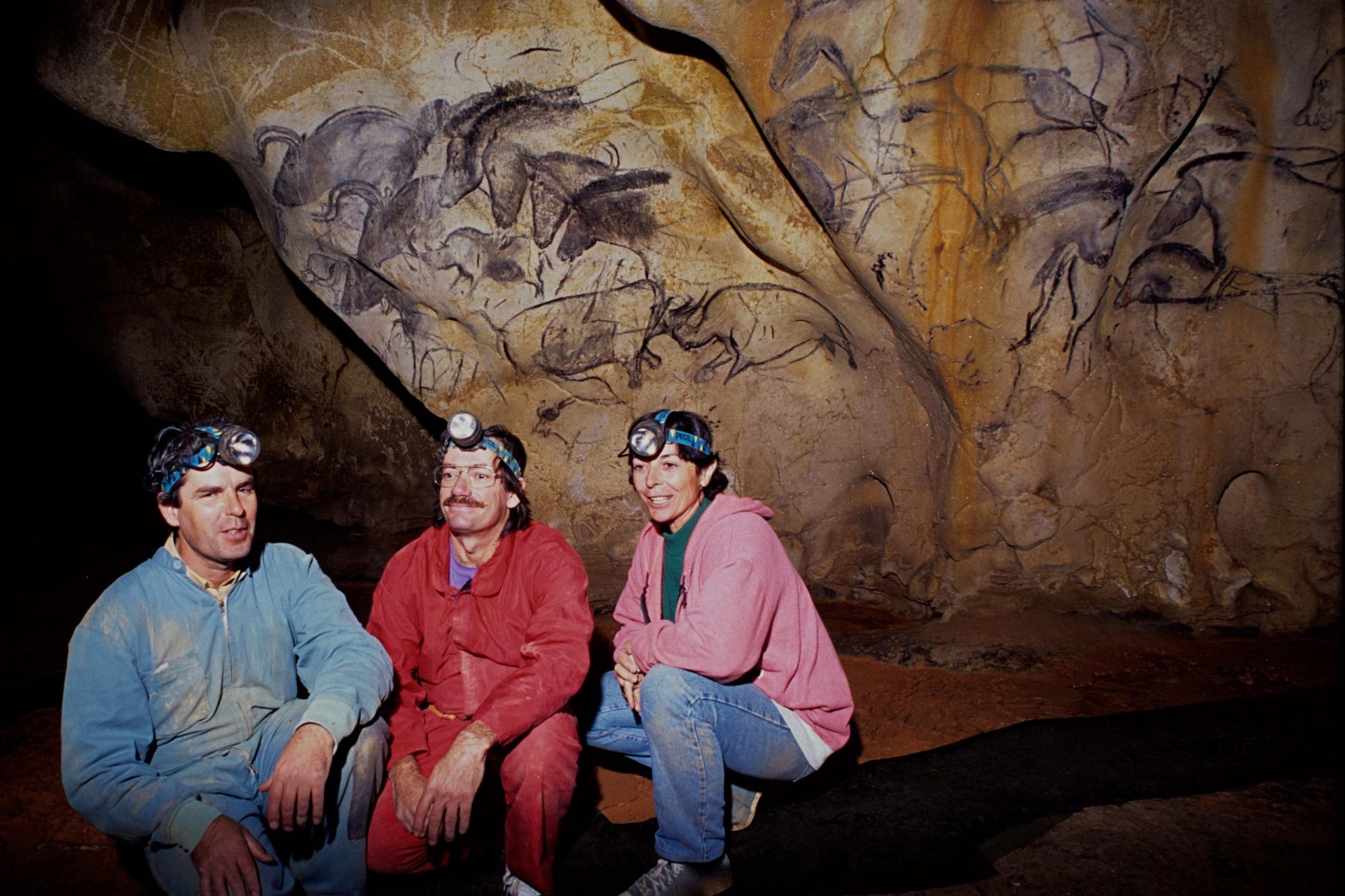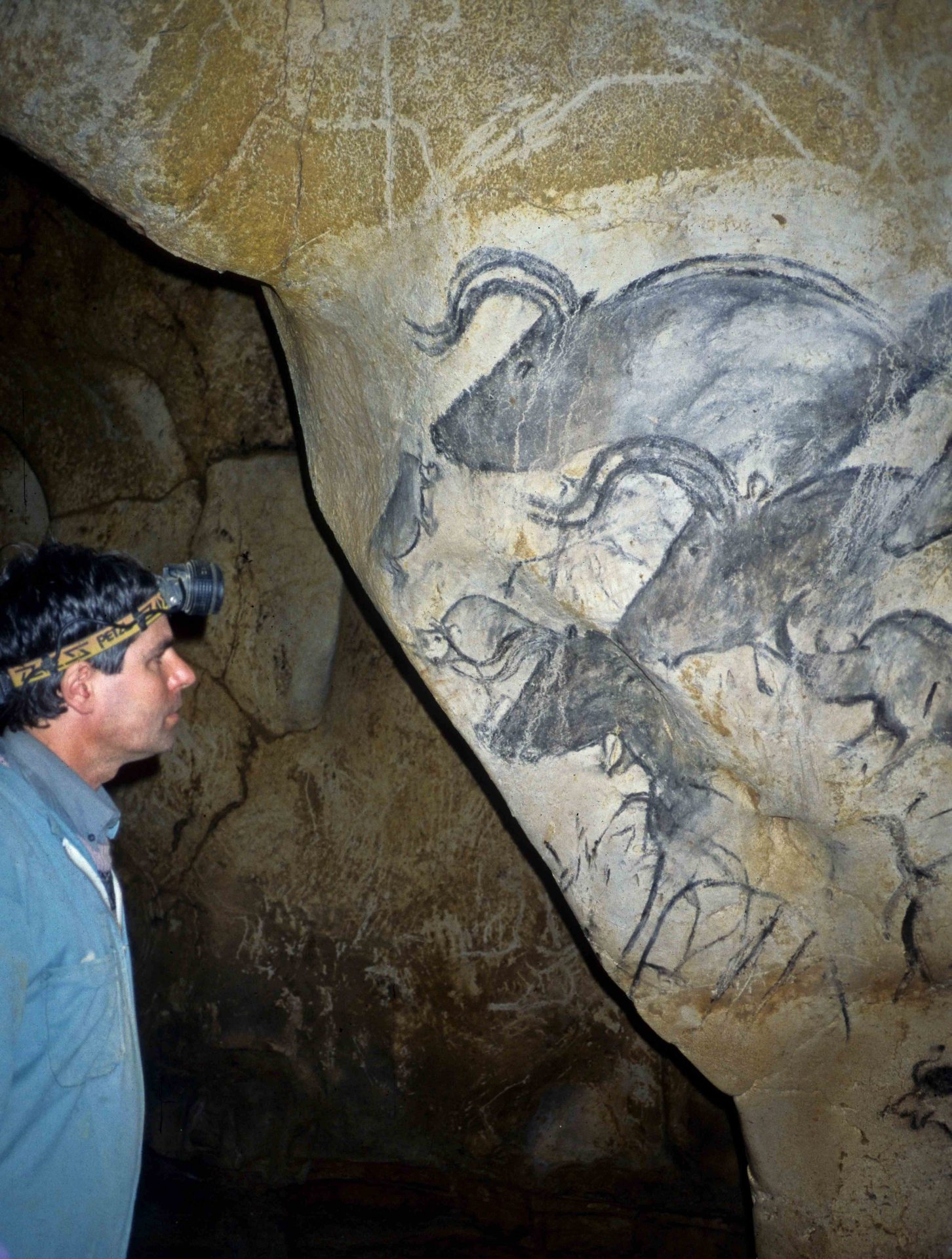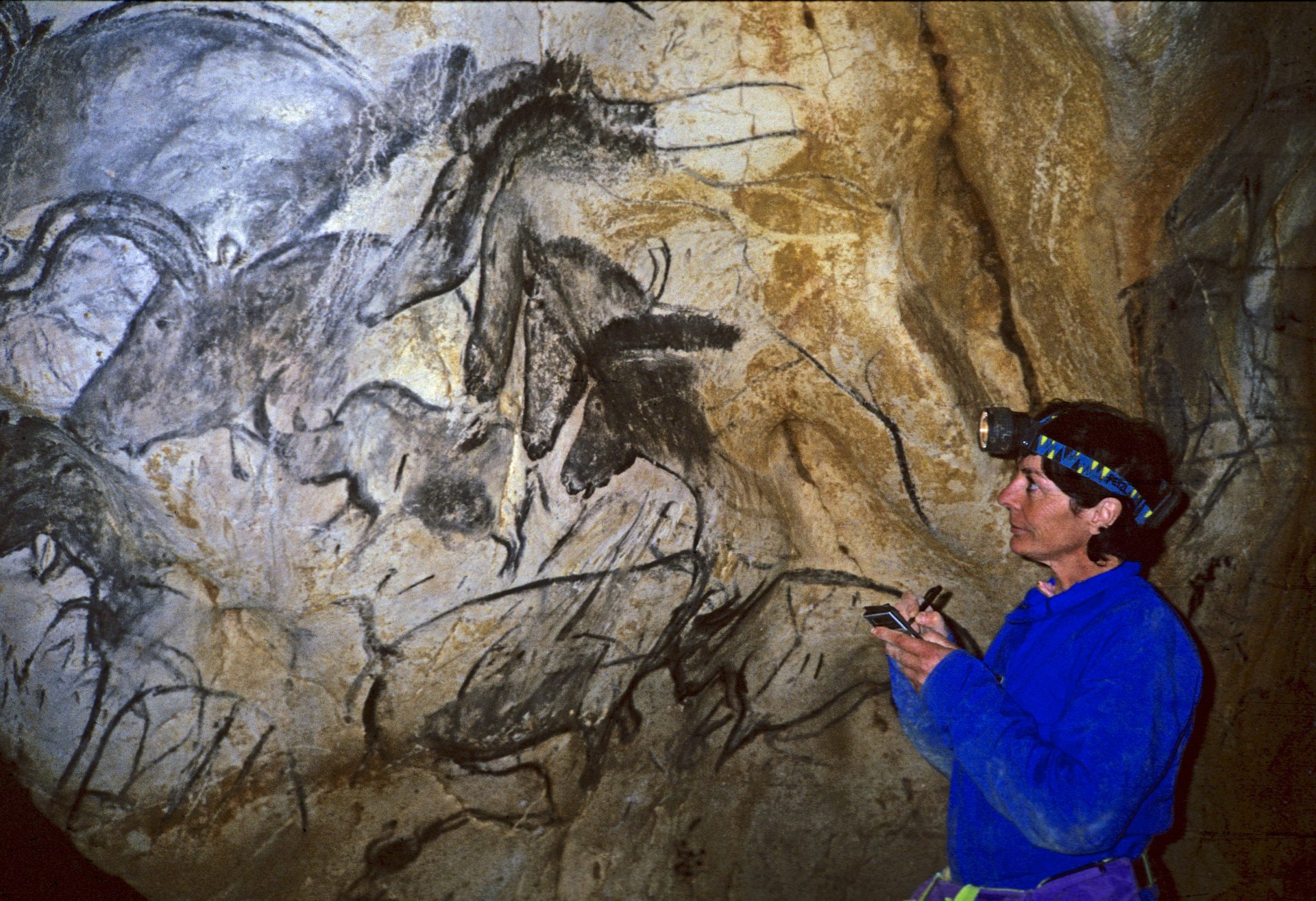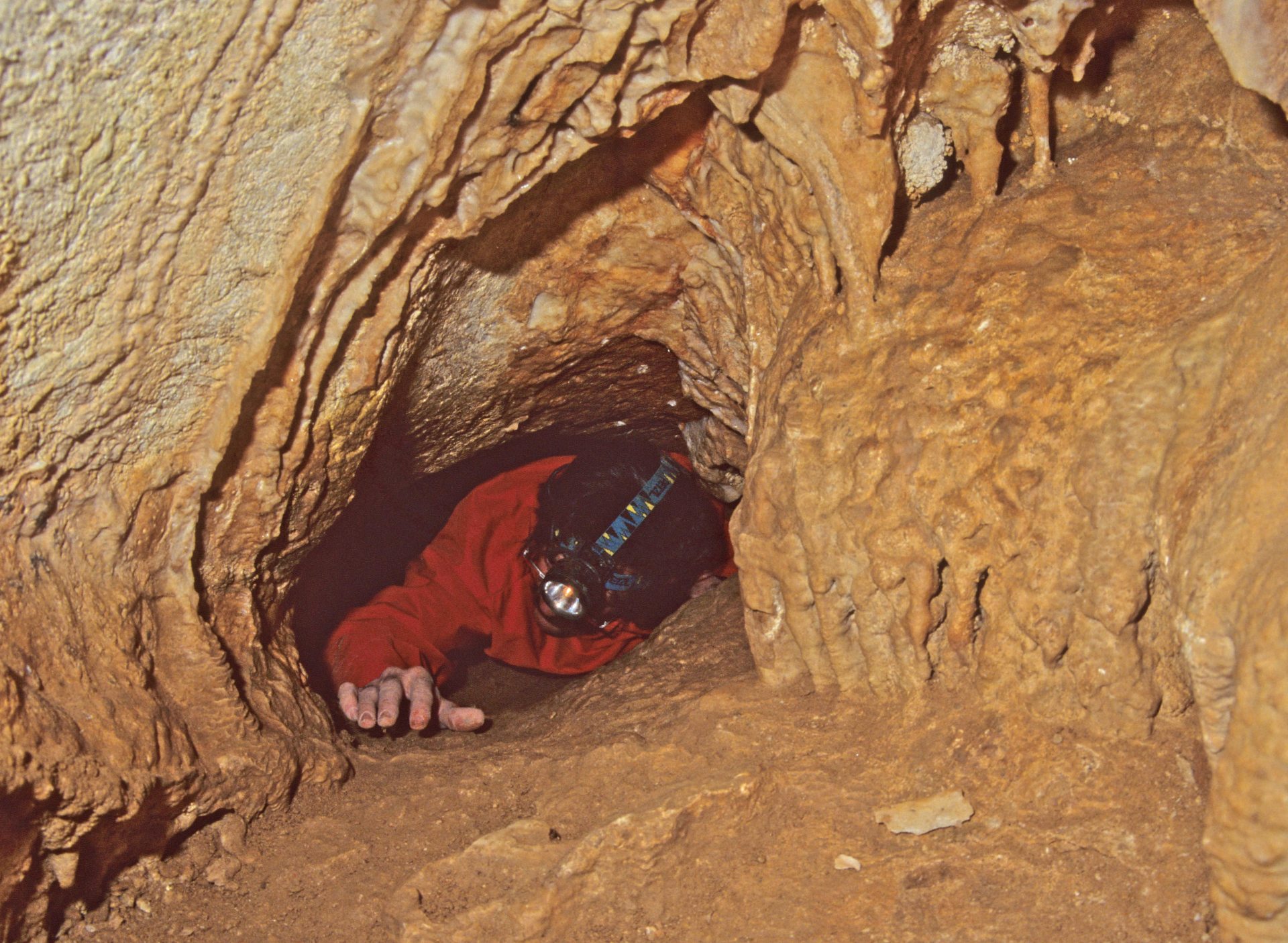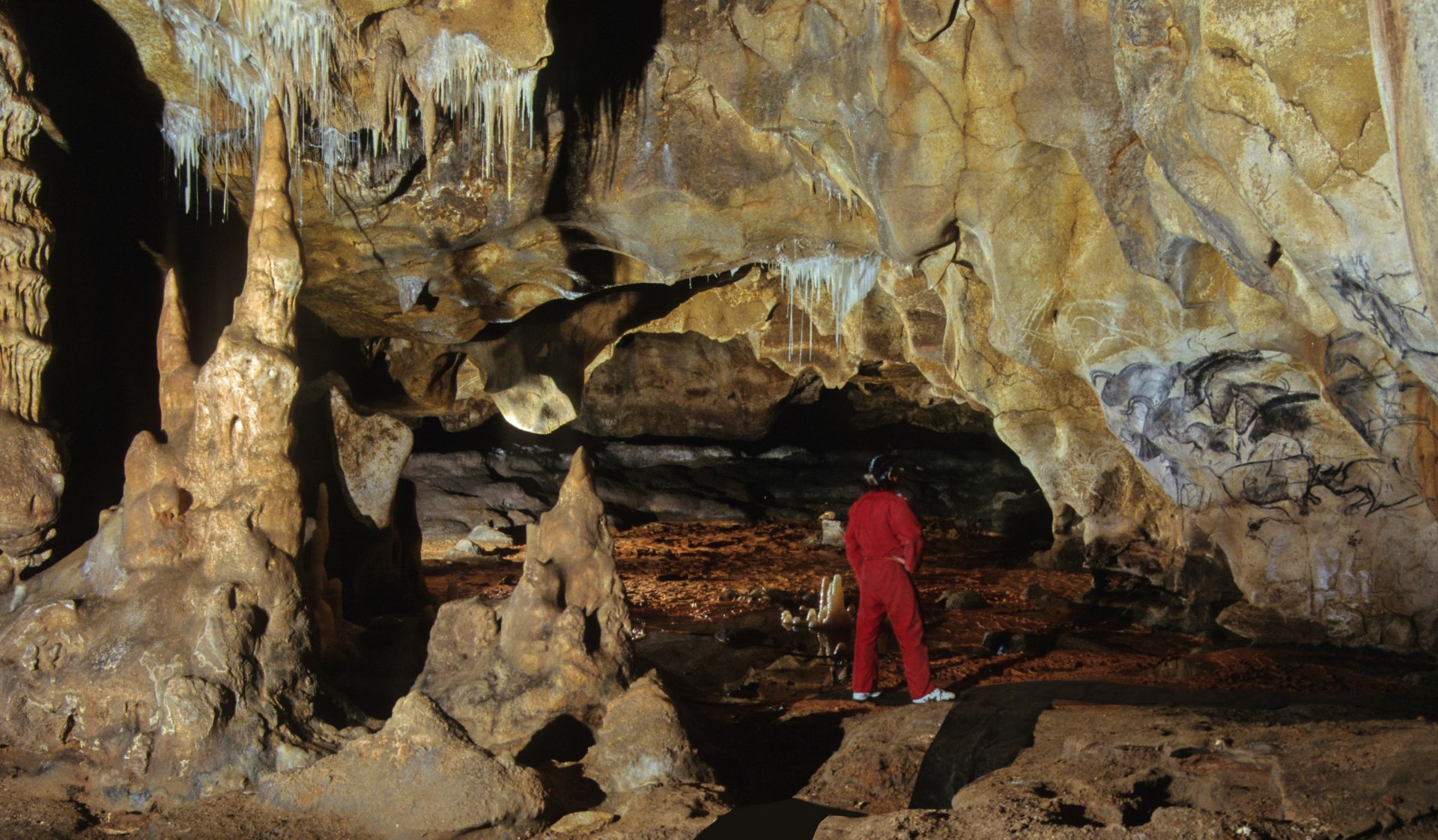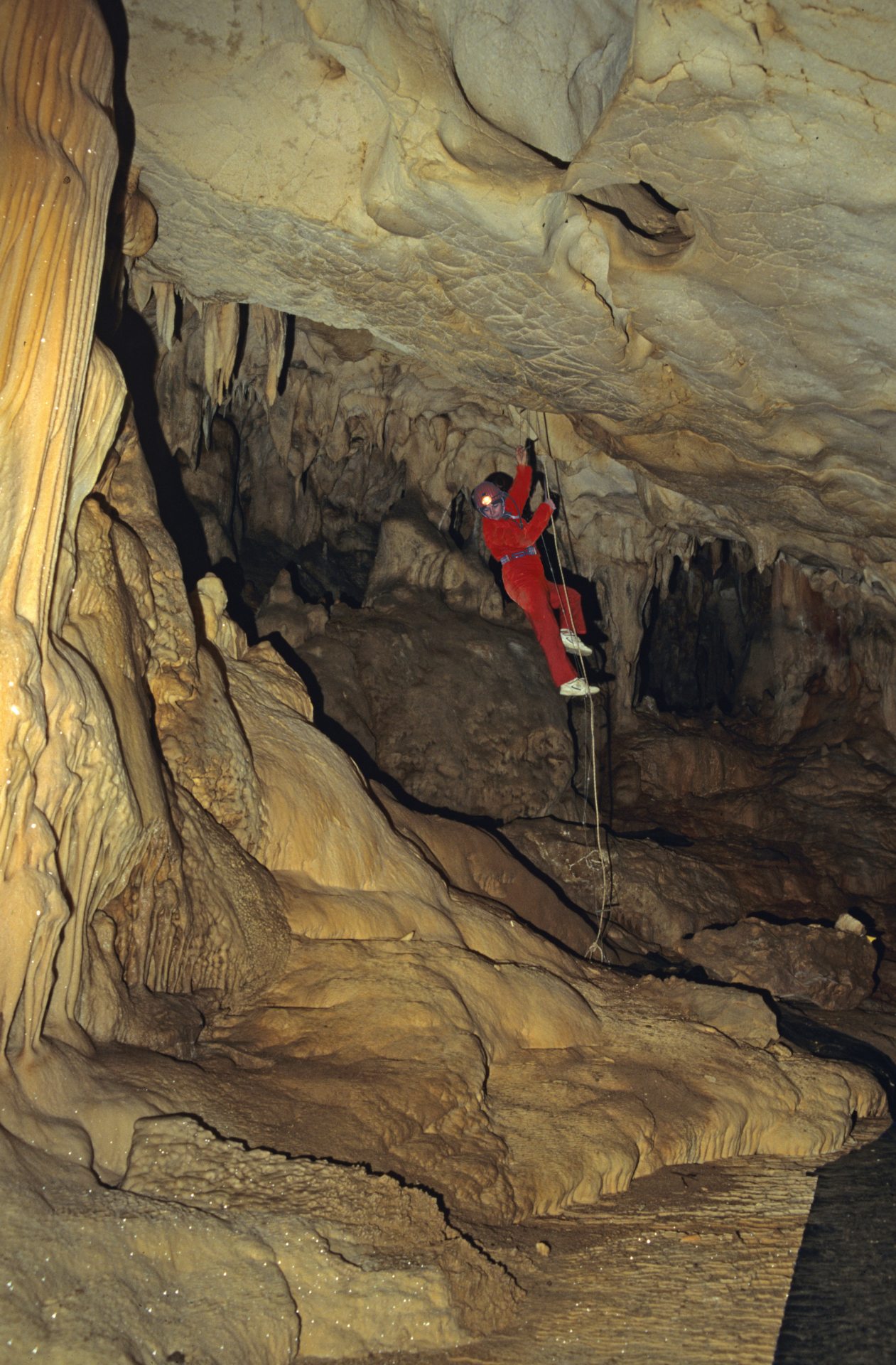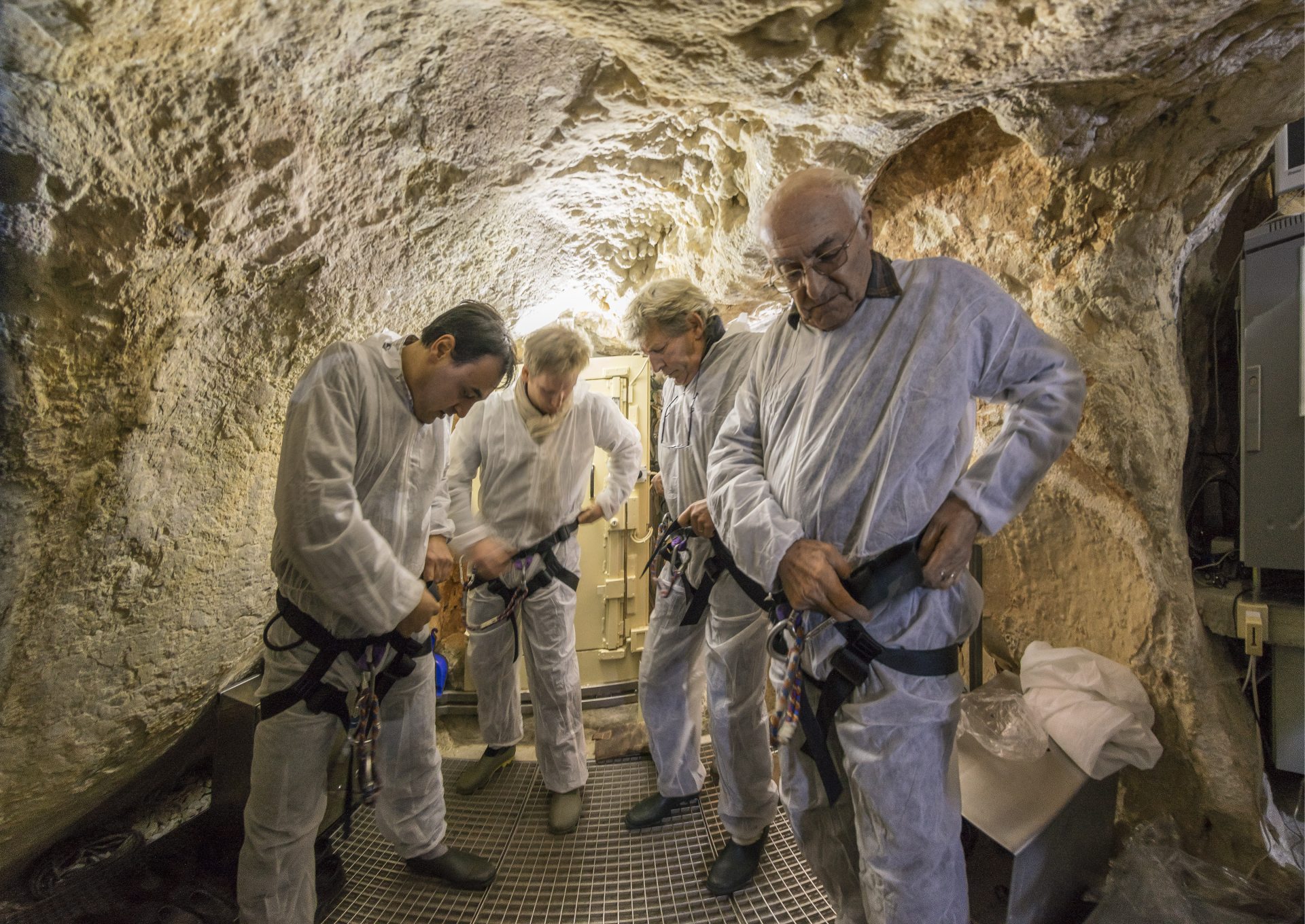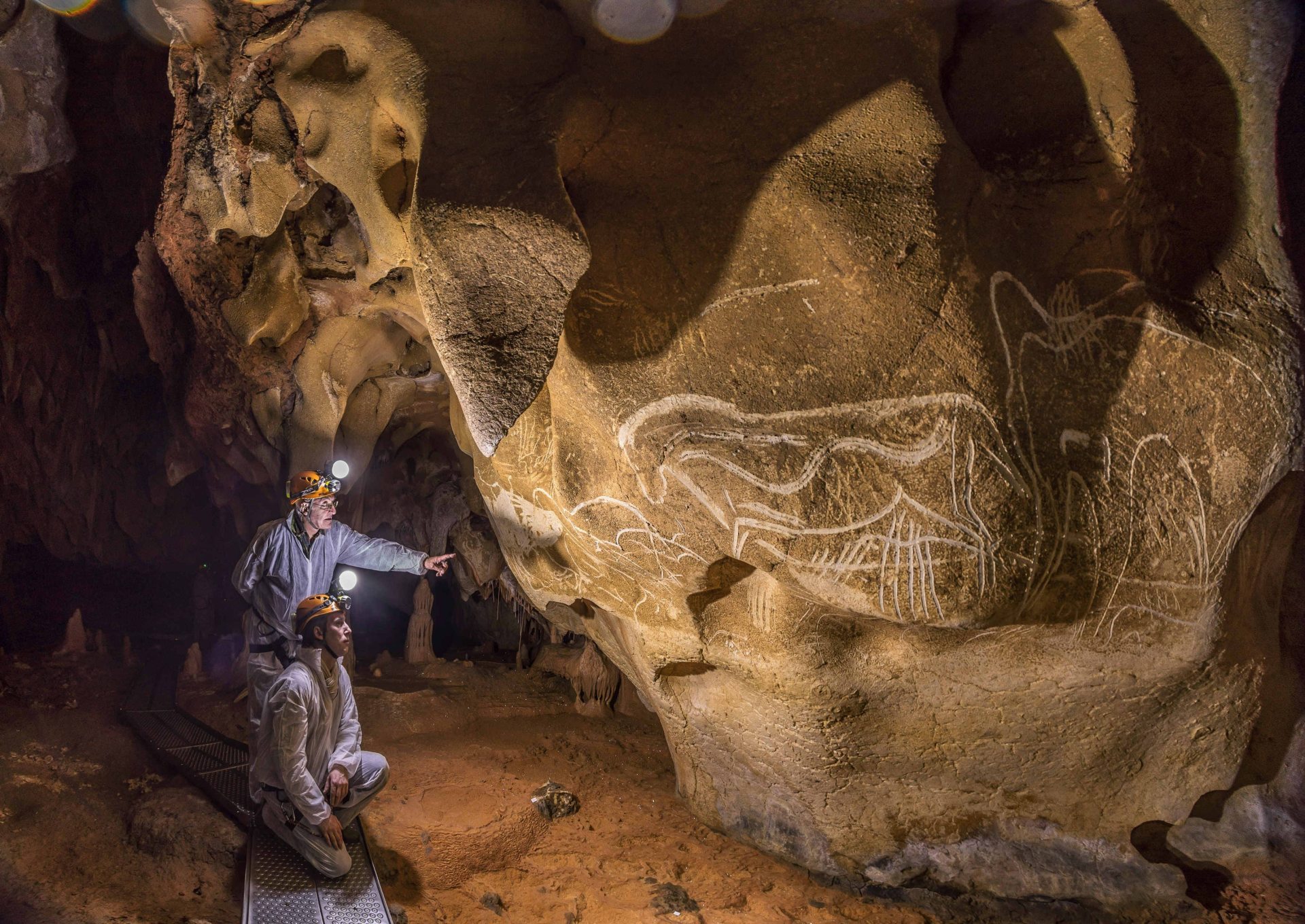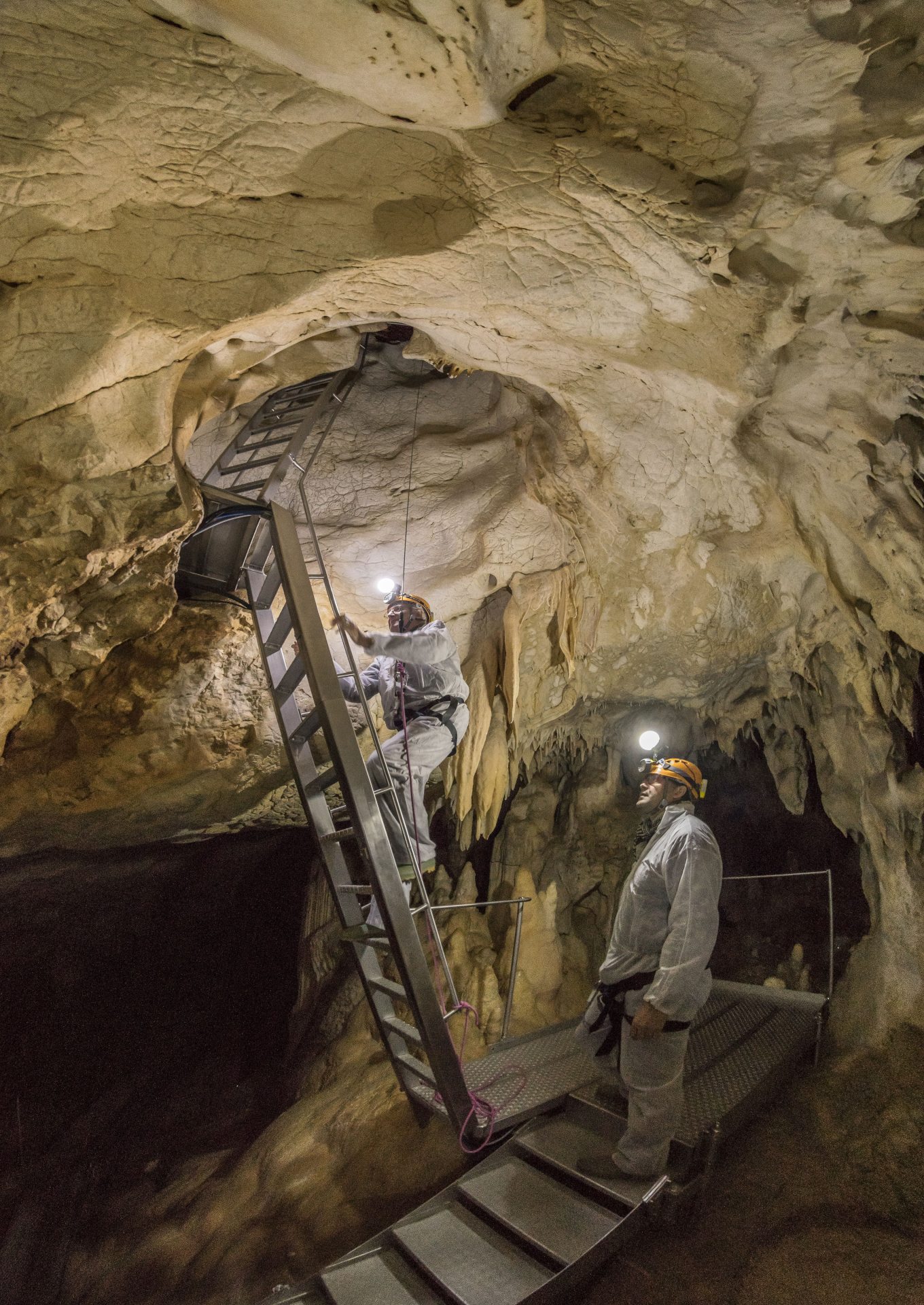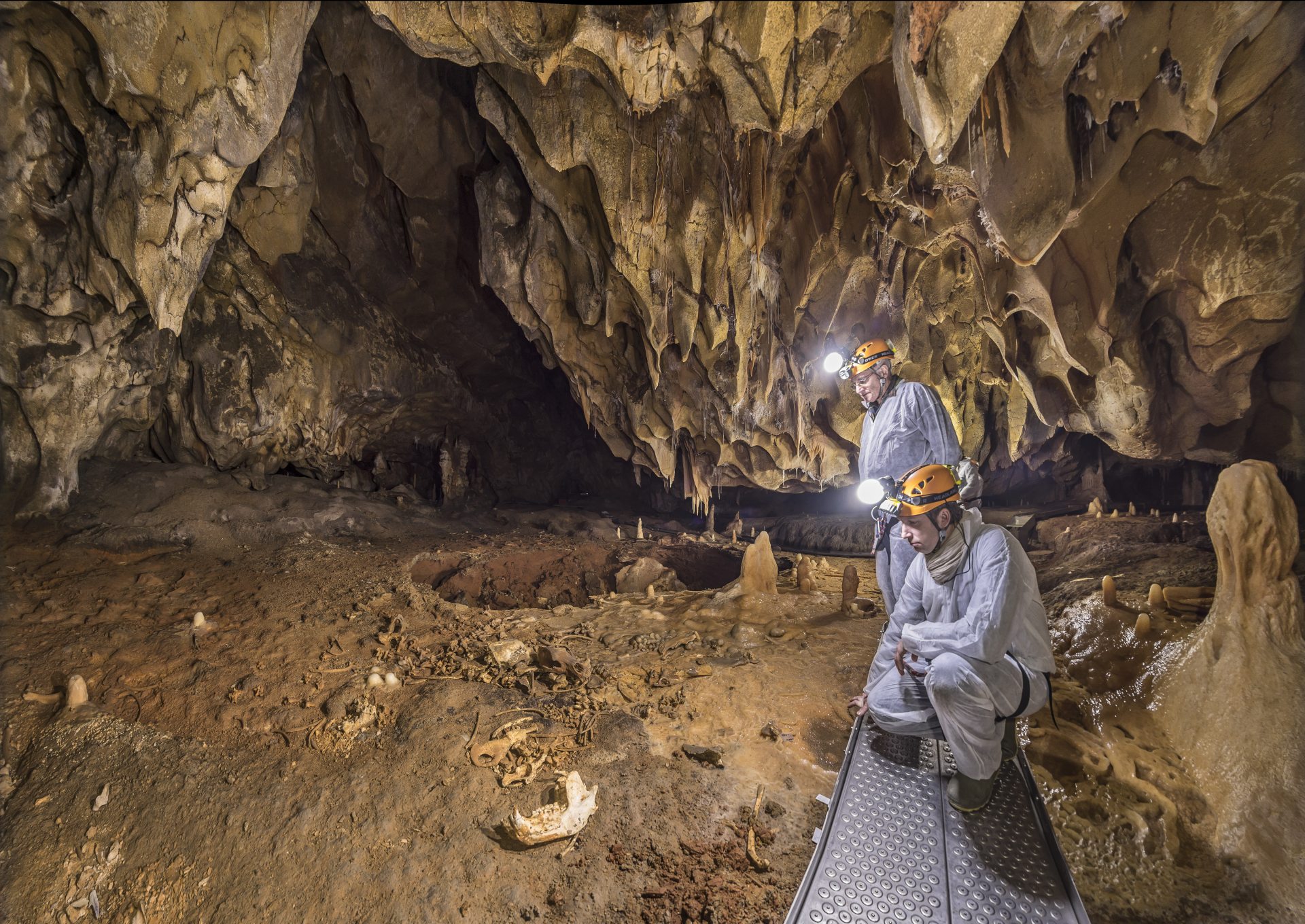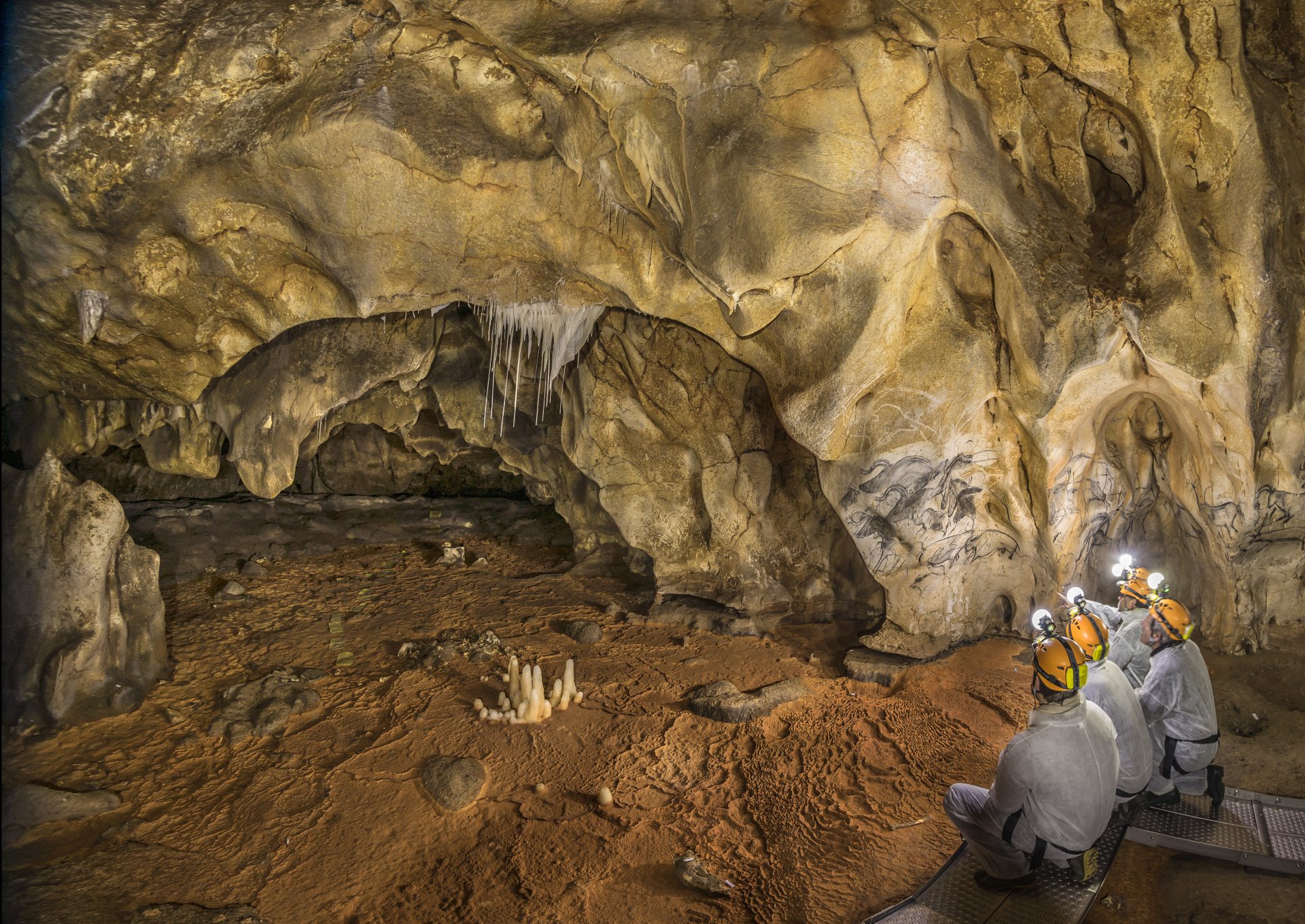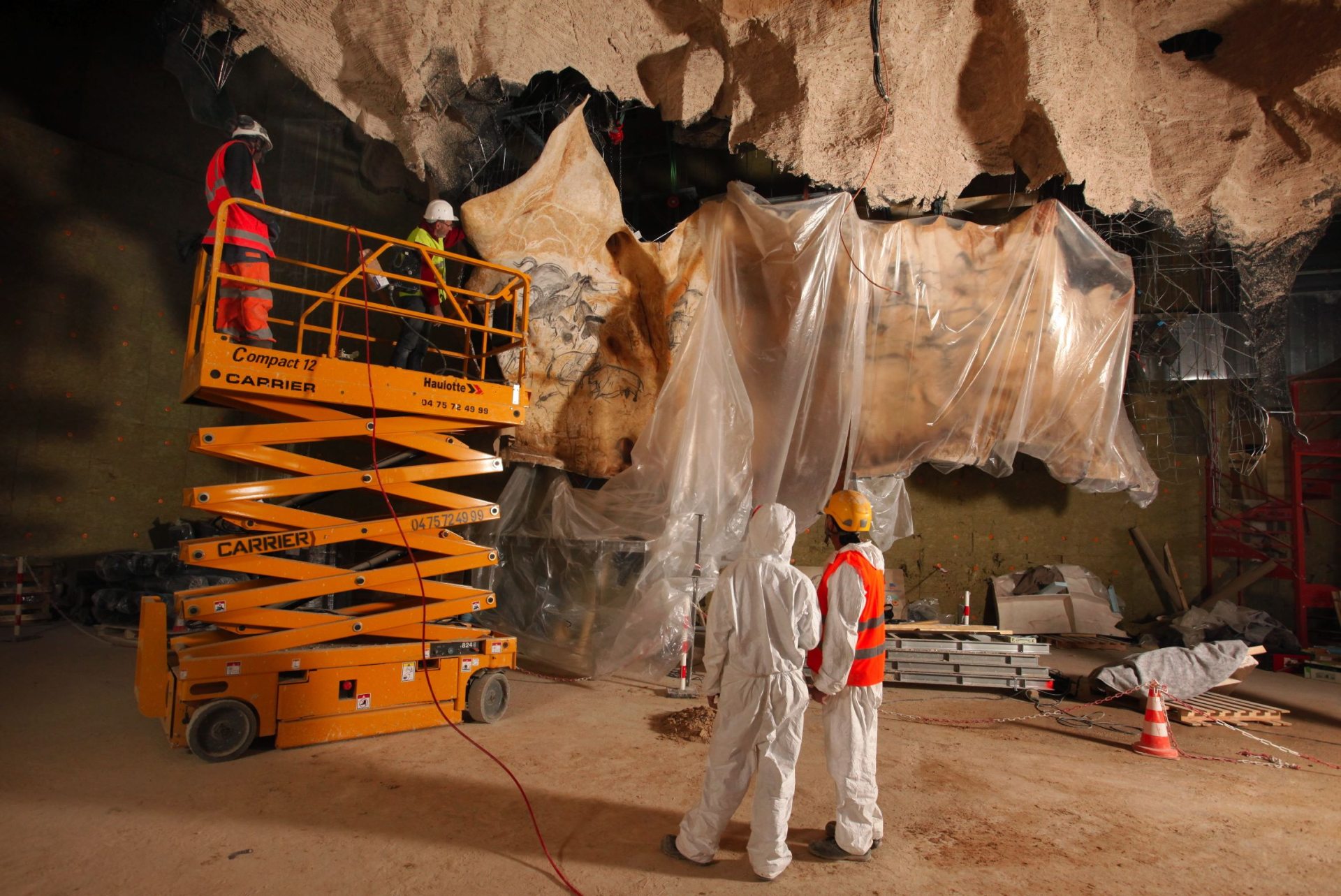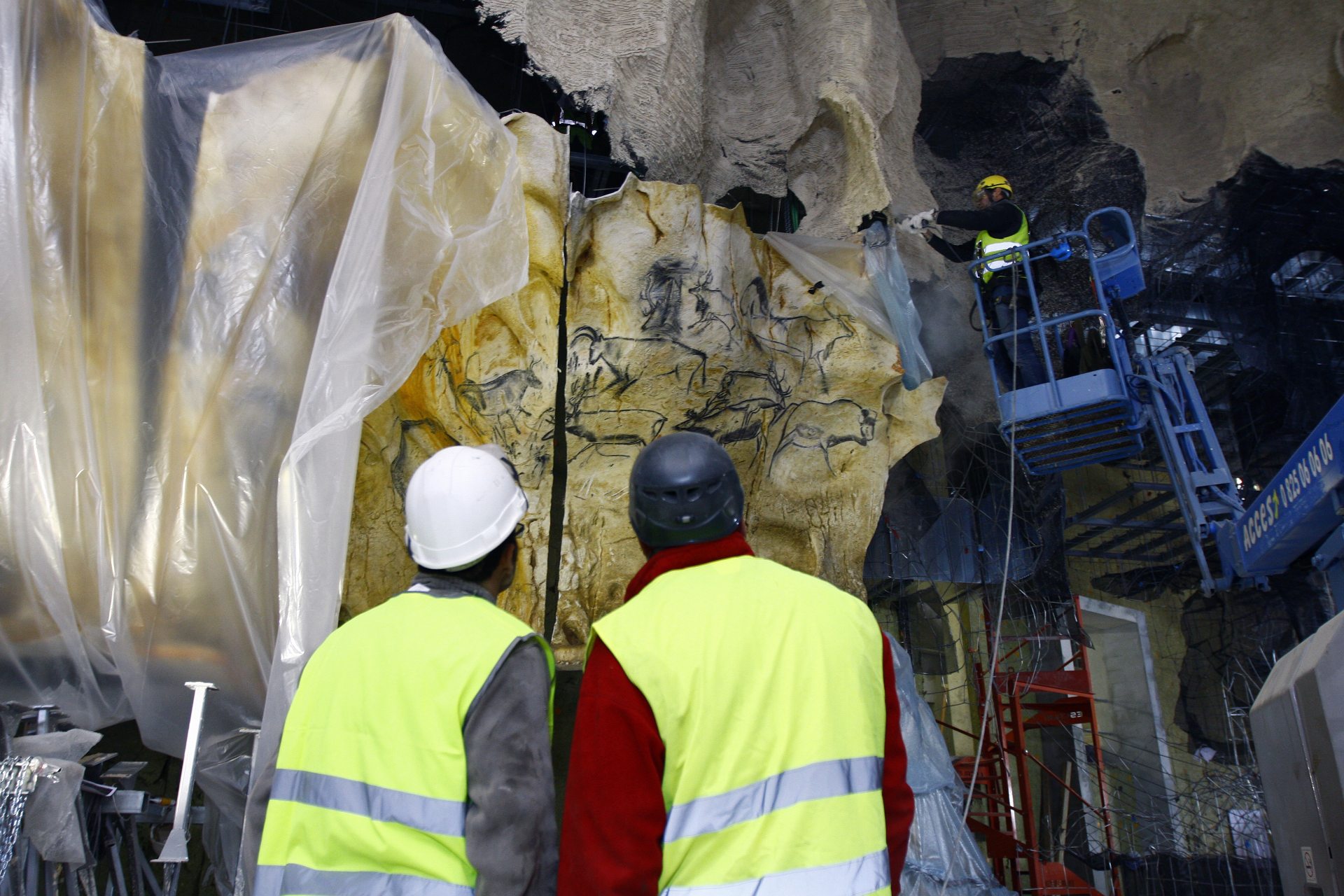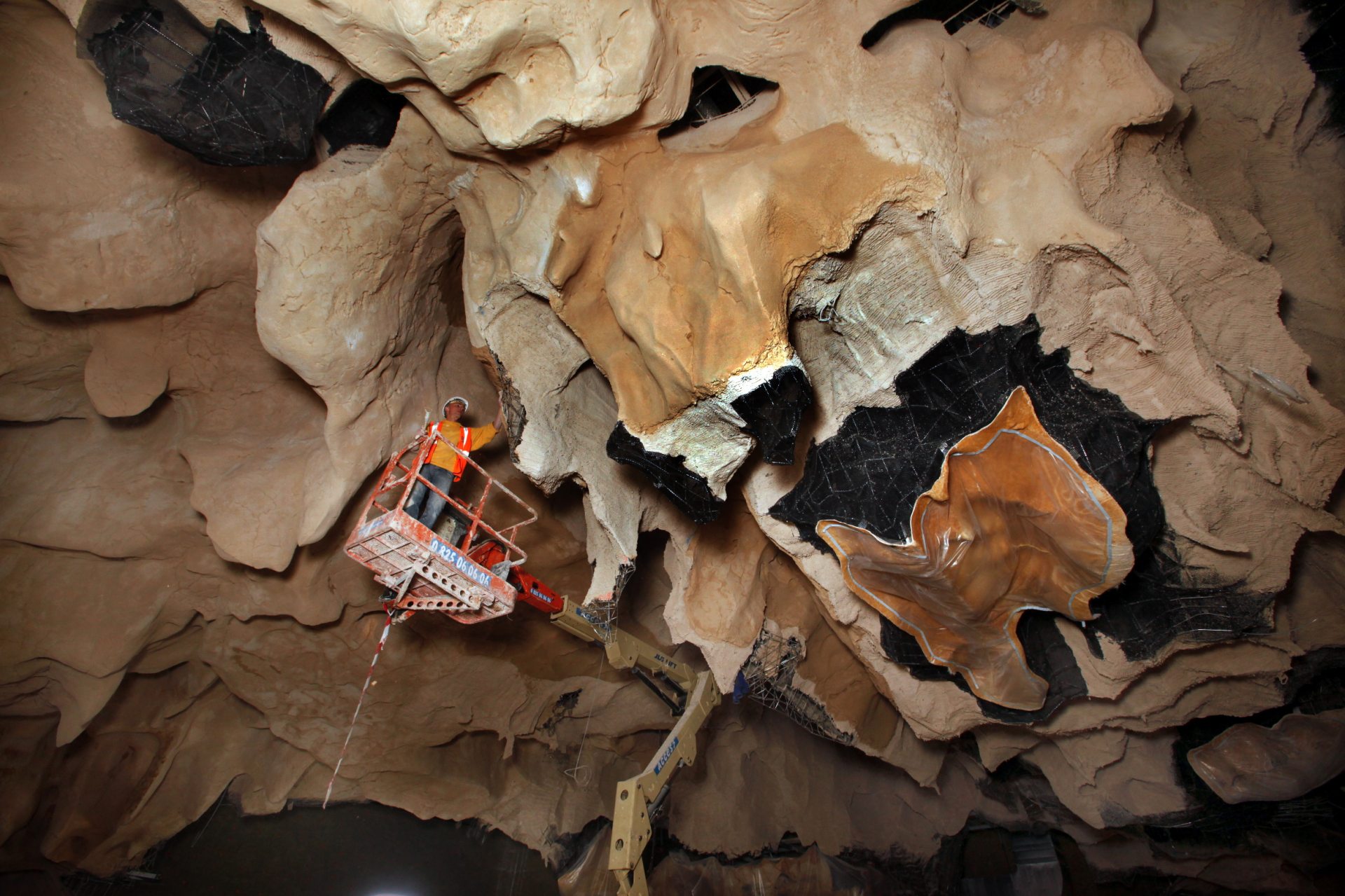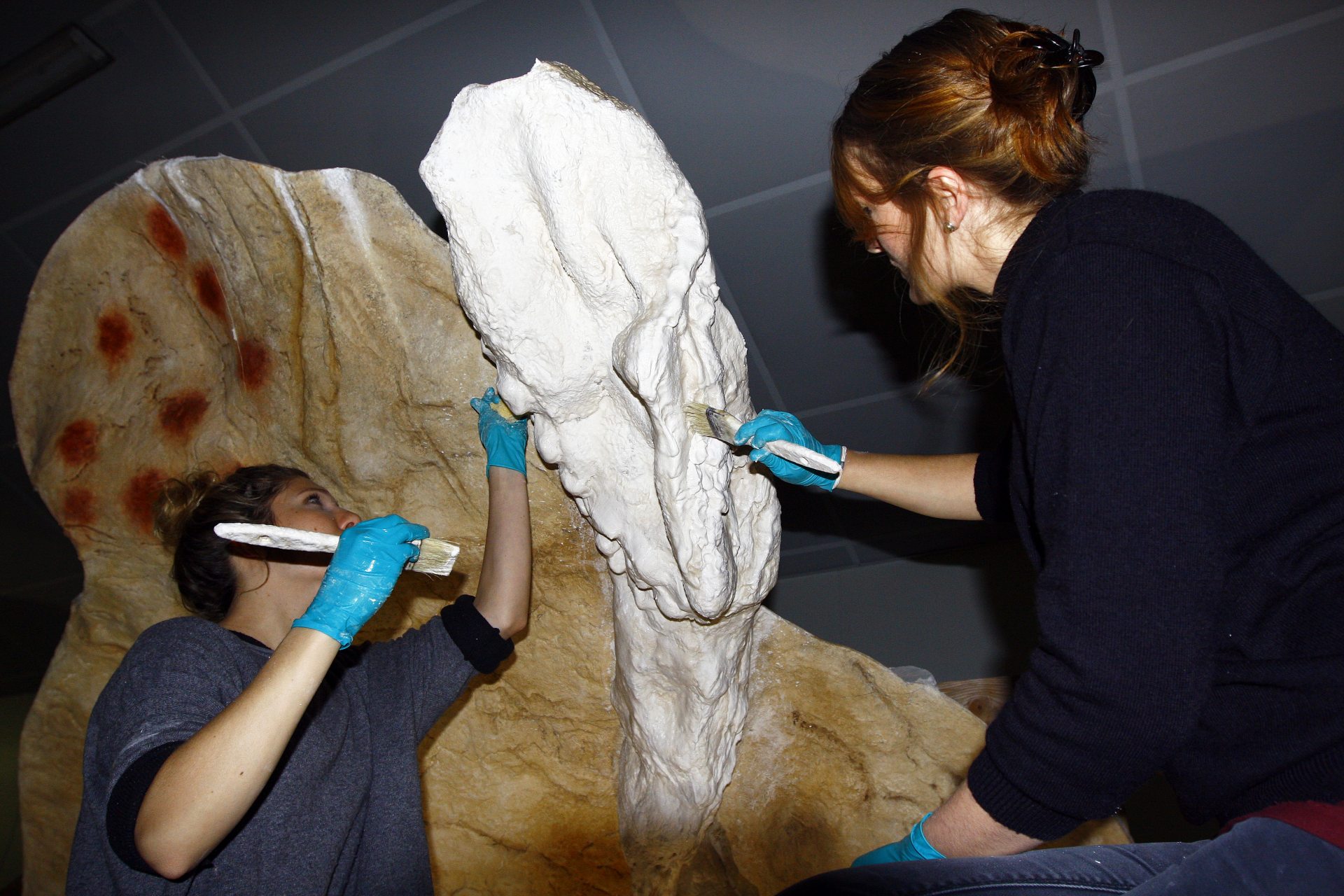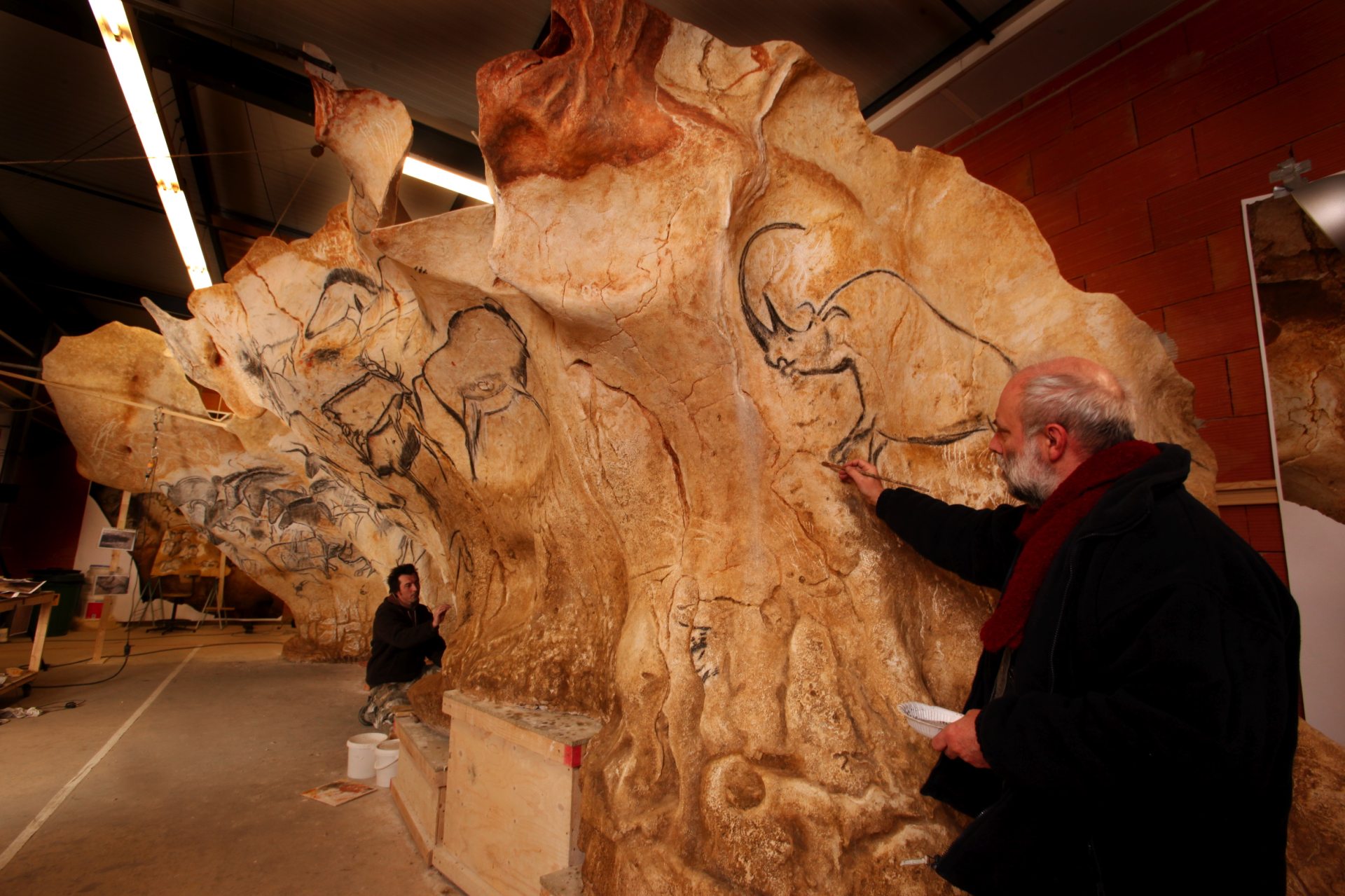construction, industrial, craft and artistic companies
The original cave
A historic discovery
On 18 December 1994 in Vallon Pont d’Arc, Ardèche, three amateur speleologists called Jean-Marie Chauvet, Éliette Brunel and Christian Hillaire were about to make a discovery that would turn the history of art, and of humanity, upside down.
21,500 years after the collapse of the cave opening to the cavity that it had been protecting, they entered what would later be known as the decorated cave of Pont d’Arc, or the “Chauvet Cave”. What they discovered was humanity’s oldest-known masterpiece, at over 36,000 years old (18,000 years older than the Lascaux cave in the Dordogne).
The Chauvet cave is home to an exceptional collection of artworks. Their age, their size and the quality of the painting make them unique and unrivalled in the rest of the world. They are the work of hunter-gatherer societies of the Palaeolithic era. The cave art has been exceptionally preserved. This cavity, its paintings, its engravings and its bones have travelled through time to form a unique heritage, brought to us intact straight from the Prehistoric period.
A cave to be preserved and studied
The significance of the discovery was immediately recognised after expert assessment by Jean Clottes, then General Curator of Artistic Heritage and a renowned figure in the study of cave painting. The three speleologists received his congratulations for the care they took in preserving their discovery. He advised that the cave be immediately and completely protected, to shield it from any damage, disturbance or looting. Due to its exceptionally well-preserved state, this would also enable it to undergo scientific research which was rarely able to carried out on similar, less well-conserved discoveries.
Before any other interventions were made, specialist research facilities (the French Historic Monuments Research Laboratory and CNRS Underground Laboratory in Moulis) analysed the initial state of the cave to establish the microbiological and climatic situation. Their findings allowed them to draw up the visitation rules governing the very few people allowed to enter the cave. The priority was to secure, conserve, and subsequently be able to study the cave.
A multidisciplinary team has been studying the cave since 1998, with a multitude of different approaches: archaeology of the cave floor and walls, palaeoenvironmental analysis, zooarchaeology, carbon dating, cultural anthropology, geomorphology… The successor of Jean Clottes and Jean-Michel Geneste is now Carole Fritz, who leads the team of international and interdisciplinary scientists.
Key dates
- 18 December 1994Discovery of the Chauvet Cave18 December 1994Discovery of the Chauvet Cave
- 29 December 1994Authentication of the artworks by Jean Clottes, General Curator of Artistic Heritage and international cave painting expert for UNESCO and ICOMOS.29 December 1994Authentication of the artworks by Jean Clottes, General Curator of Artistic Heritage and international cave painting expert for UNESCO and ICOMOS.
- 13 October 1995Listed on the Historical Monument register. Closure and permanent surveillance of the cave.13 October 1995Listed on the Historical Monument register. Closure and permanent surveillance of the cave.
- 14 February 1997Ownership of the decorated cave of Pont d’Arc, known as the Grotte Chauvet (Chauvet Cave), passes to the French State14 February 1997Ownership of the decorated cave of Pont d’Arc, known as the Grotte Chauvet (Chauvet Cave), passes to the French State
- 24 January 2013France decides to apply for UNESCO World Heritage Site status for the decorated cave of Pont d’Arc, known as Grotte Chauvet24 January 2013France decides to apply for UNESCO World Heritage Site status for the decorated cave of Pont d’Arc, known as Grotte Chauvet
- 22 June 2014The decorated cave of Pont d’Arc, known as Grotte Chauvet, is granted UNESCO World Heritage Site status22 June 2014The decorated cave of Pont d’Arc, known as Grotte Chauvet, is granted UNESCO World Heritage Site status
The original cave
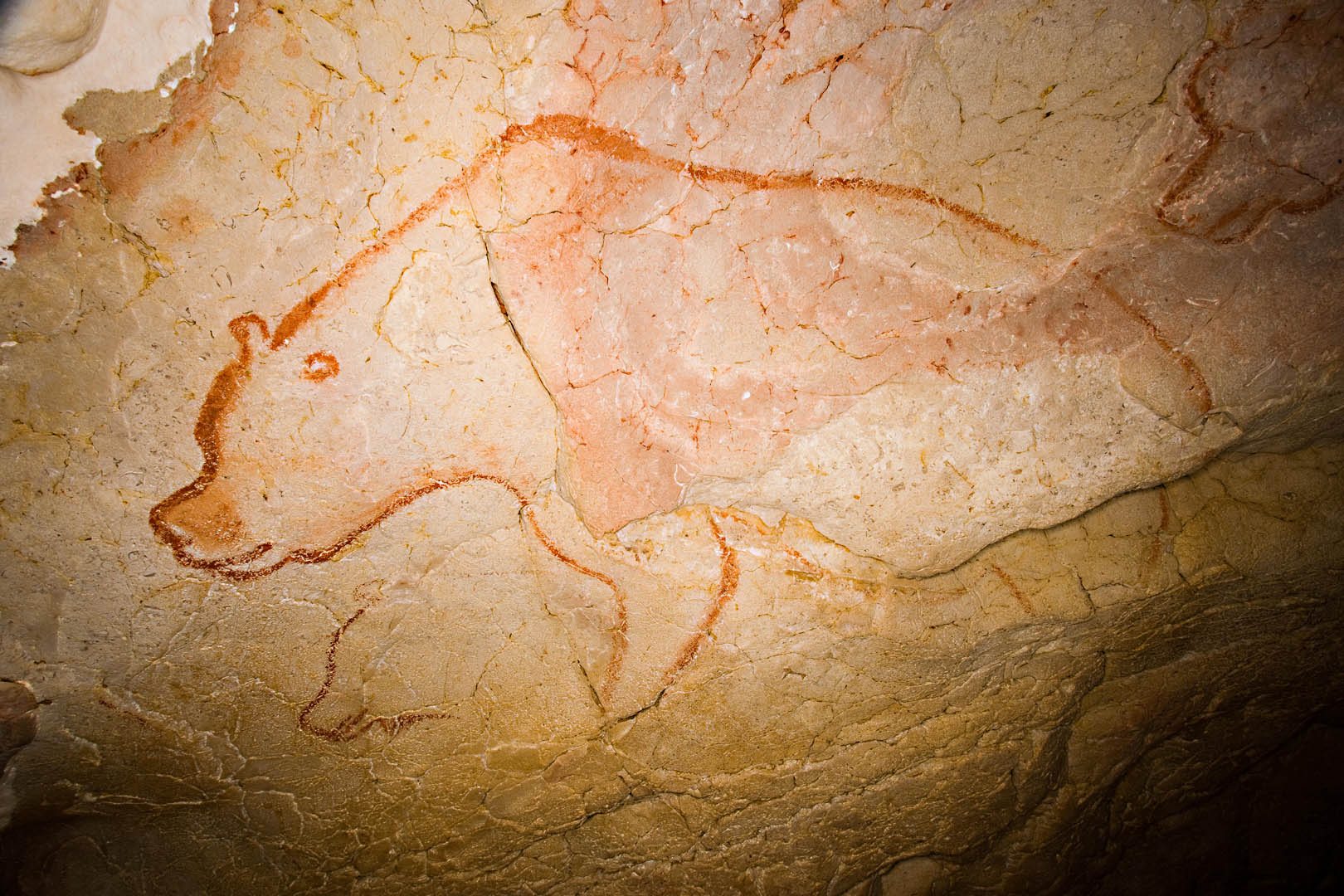
A UNESCO site
The Cave being listed as a UNESCO World Heritage Site in June 2014 is a wonderful tribute to history’s very first artists.
In 2013, the government decided to officially apply for world heritage status for the decorated cave of Vallon Pont d’Arc. On 22 June 2014 in Qatar, after an 18 month-long evaluation period, the UNESCO World Heritage Committee awarded the decorated cave of Pont d’Arc, or the “Chauvet Cave”, the status of World Heritage Site. The universal importance of the site had been unanimously recognised.
36,000 years old, located in Vallon Pont d’Arc at the gateway to the Ardèche Gorge, the whole cave was conferred this unique status, as was the surrounding natural landscape and groundwater basin, including the 54-metre-tall Pont d’Arc natural bridge. It is the oldest cultural site to have ever been awarded UNESCO World Heritage status. This historical treasure boasts 3 distinguishing features that are rarely found together: its age, its level of conservation and the artistic richness of its depictions (more than 1000 pictures, of which 425 are animals). The cave’s bestiary, where depictions of 14 species can be observed (the majority of which were dangerous animals such as mammoths, felines, woolly rhinoceros, cave bears, etc.) is an unprecedented feature, containing paintings of animals which were unheard of in Palaeolithic cave art (panthers, owls, musk oxen).
The fact that the site had been sealed off from the public could have jeopardised its chances of becoming France’s 39th UNESCO World Heritage Site, but the meticulous reproduction of the cave that was being undergone would ensure that the public could access what is now considered to be humanity’s 1st great masterpiece.
The reproduction
A legacy to be passed down
How could humanity’s first true masterpiece be shared with the greatest number of people?
To this day, the Grotte Chauvet 2 – Ardèche is the world’s largest decorated cave replica. It heralded a new era in the transmission and sharing of cultural heritage with the general public.
The replica came into being at the turn of the millennium. A joint commission was created, consisting of the Department of Ardèche and the Region of Auvergne-Rhône-Alpes. With support from French government, the European Union and the cultural site manager Kléber Rossillon, they designed and brought into being the Chauvet cave replica.
Five years of research and thirty months of construction were needed to accomplish this cultural, technological and scientific feat.
Administration of the project was assigned to the Kléber Rossillon firm of cultural and tourist site management specialists, in a public-private partnership.
The architectural firm Fabre & Speller (Clermont-Ferrand / Paris), in association with architects from the 3A agency in Ardèche, designed the project as an “imprint in the landscape”, in perfect harmony with the surrounding environment.
The creation of the replica was the work of a team with the widest range of skills imaginable: architects, scenographers, technicians, entrepreneurs, builders, welders, sculptors, artists, historians, scientists and politicians.
The pioneering digital 3D model, created by Guy Pérazio (Cabinet Pérazio – Isère), Créatime and Campenon Bernard Régions, allowed a visual access to the ancient artwork that was even better than in the original cave, where access to the walls is limited for conservation reasons. The team came up with innovative solutions, using scenographical techniques that had never before been implemented on such a large scale.
Despite the Grotte Chauvet 2 being two and a half times smaller than the original cave (with a floor space of 3,000 m² compared to 8,500 m² in the original), the surface of the walls was accurately reproduced to within millimetres. The paintings, engravings and most notable depictions, as well as essential palaeontological and geological features were reproduced on a scale of 1:1, based on the original digital copies.
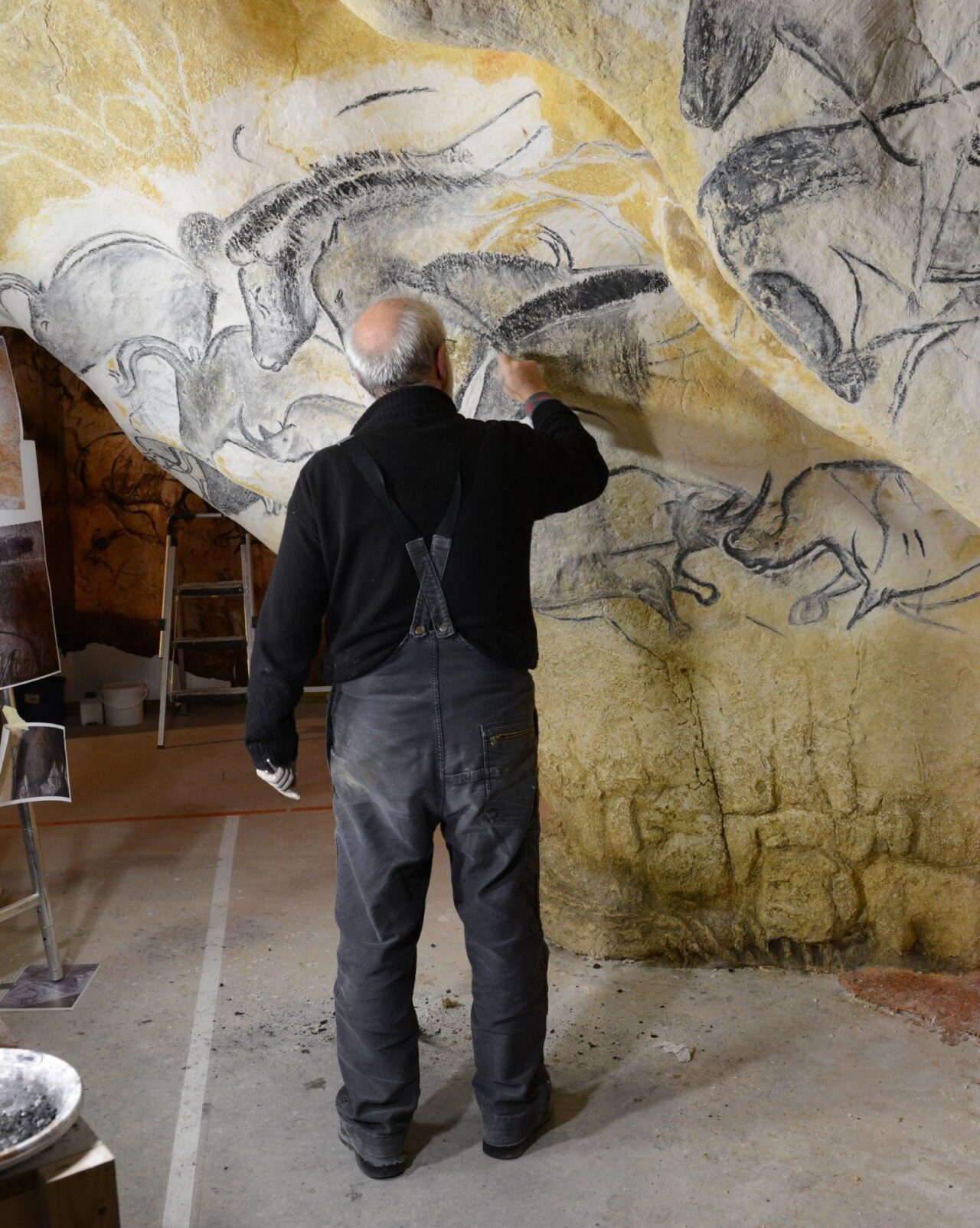 Carole Fritz – SMERGC
Carole Fritz – SMERGCA passion project
130 km of hand-crafted steel rods, 14,000 suspension hangers created to fix and stabilise the recreated cave, 8,200 m² of sculpted wall, floor and ceiling representing 52 different rock types, 27 wall panels created for 250 m² of decorated walls, 300 m² of geological elements produced, 550 sets of animal bones cast then smoothed… all this was necessary to create the replica cave.
The reproduction of the cave painting was entrusted to two world-renowned groups of prehistoric art experts, led by Gilles Tosello (Déco Diffusion) and Alain Dalis (Arc et Os).
The scientists used their findings to guide the artists, so that they could better understand and assimilate the techniques and the meanings behind the Palaeolithic cave art.
The artists were then able to reproduce the hand gestures and movements used at the time, to bring to life the original essence of the artwork rather than just creating a copy.
The task of plunging visitors into a cool, damp and dark underground environment was entrusted to Parisian scenography agency Scène. It was a huge feat to undertake: recreating a real cave with its floor, its walls, its arches… a whole, realistic underground landscape that would accommodate human and animal remains, as well as humanity’s first masterpieces. A crazy gamble, but one that paid off.
The 3 steps that were necessary to create the digital reproduction of the cave :
- Recording the positions of a cloud of tiny dots, to recreate the precise measurements of the original surface
- Taking 6000 digital photos
- Projecting these images onto the relevant digital walls
Key figures
m² of floor space
m² of scenery surfaces created (floor, walls, ceilings)
months of construction
million of investments :
Region of Auvergne-Rhône-Alpes €14.7M, Department of Ardèche €14.7M,
French State €12.2M, European Union €9.9M, and cultural manager Kléber Rossillon €3.5M

